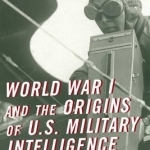World War I and the Origins of U.S. Military Intelligence
BookThis item doesn’t have any media yet
2015 | Fiction & Poetry
In World War I and the Origins of U.S. Military Intelligence, military historian James L. Gilbert provides an authoritative overview of the birth of modern Army intelligence. Following the natural division of the intelligence war, which was fought on both the home front and overseas, Gilbert traces the development and use of intelligence and counterintelligence through the eyes of their principal architects: General Dennis E. Nolan and Colonel Ralph Van Deman. Gilbert explores how on the home front, US Army counterintelligence faced both internal and external threats that began with the Army's growing concerns over the loyalty of resident aliens who were being drafted into the ranks and soon evolved into the rooting out of enemy saboteurs and spies intent on doing great harm to America's war effort. To achieve their goals, counterintelligence personnel relied upon major strides in the areas of code breaking and detection of secret inks. Overseas, the intelligence effort proved far more extensive in terms of resources and missions, even reaching into nearby neutral countries.
Intelligence within the American Expeditionary Forces was heavily indebted to its Allied counterparts who not only provided an organizational blueprint but also veteran instructors and equipment needed to train newly arriving intelligence specialists. Rapid advances by American intelligence were also made possible by the appointment of competent leaders and the recruitment of highly motivated and skilled personnel; likewise, the Army's decision to assign the bulk of its linguists to support intelligence proved critical. World War I would witness the linkage between intelligence and emerging technologies-from the use of cameras in aircraft to the intercept of enemy radio transmissions. Equally significant was the introduction of new intelligence disciplines-from exploitation of captured equipment to the translation of enemy documents. These and other functions that emerged from World War I would continue to the present to provide military intelligence with the essential tools necessary to support the Army and the nation. World War I and the Origins of U.S.
Military Intelligence is ideal not only for students and scholars of military history and World War I, but will also appeal to any reader interested in how modern intelligence operations first evolved.
Related Items:
| Published by | Rowman & Littlefield |
| Edition | Unknown |
| ISBN | 9781442249189 |
| Language | N/A |
Images And Data Courtesy Of: Rowman & Littlefield.
This content (including text, images, videos and other media) is published and used in accordance
with Fair Use.
